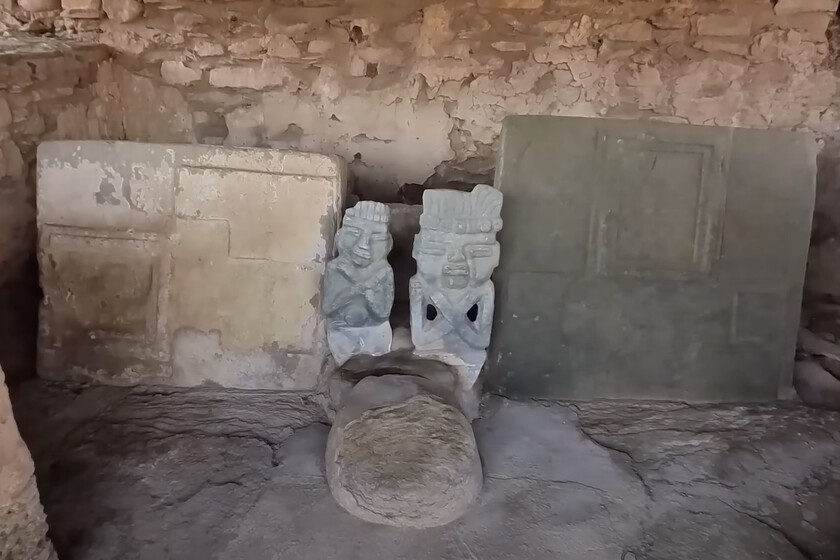Discovering the original names of the ancient pre-Hispanic cities of Mexico is fascinating and an example is Iztapan. In nhuatlmeans something like “Place where there is salt.” In 200 BC they began to settle to exploit the salt and had their population changes to end up being called San Miguel Ixtapan. We talk a lot about Yucatan, its tourism and wonders (also its controversial gentrification), but in San Miguel de Ixtapan, in Mesoamerica, there is also a very important archaeological zone.
And there is an organization called ARX Project that wants to unravel all the secrets of San Miguel Ixtapan. What they have found It’s something that shouldn’t be there.
latest technology. That Mexico is a mine is evident. Every now and then we have news about possible archaeological zones thanks to what they are discovered with the works of the Mayan Train, with projects that were already underway or by a neighbor who was expanding the ranch and can no longer do so.
The latest technology also allows us to explore the interior of archaeological zones such as the Castle of Chichen Itzal and, focusing on ARX Projectare a group of researchers who are using the latest technology to explore archaeological sites in a non-invasive way, such as the Mitla church in Oaxaca (discovering an entrance “to the infamando”).
San Miguel Ixtapan. As we say, it is an important archaeological zone that is about 100 kilometers southwest of Toluca and, although it had been inhabited for centuries, its peak occurred during 700 to 900 AD. This coincided with the decline of Teotihuacán and it is very interesting that it The first thing they found of the site was not a vestige of it, but a model carved in rock that represents one of its temples, which dates back to sometime between 900 and 1200 AD. It is this:
The slabs. The area has not been studied in depth due to certain difficulties, but ARX Project has been studying the region since 2021 and has made very interesting discoveries. Perhaps the most relevant is that of more than a dozen megalithic stone slabs with a very distinctive design: they are an inverted T on a framed rectangle. Its meaning is not known, but it could be related to Mesoamerican concepts such as Chicomoztoc.
Origin: unknown. The meaning of the ‘T’ is not the only thing they don’t know. Although many slabs have been dated as having been built at some point in the Epiclassic period (between 700 and 900 AD), others may be much older. There is also the possibility that all of them are previous and that they were simply reused later.
But what is really strange is that none of these megalithic slabs are carved or built following Mesoamerican artistic trends. In fact, researchers have concluded that they have more similarities with Peruvian and Bolivian rocks.
Aquiagua. It is always very good to say that “we have found an unknown civilization” and, of course, the ARX team does not affirm it, but they do leave it out because, at least for the moment, they have not managed to find the key that anchors that style. of the megalithic slabs to the region. The first thing that comes to mind is a case like Stonehenge, but that is another topic.
In addition to the slabs, during exploration, ARX this year found terraces, fortifications and pre-Hispanic structures along the course of the Aquiagua River. A megalithic quarry was also discovered with a half-finished job: a semi-finished block measuring three by three meters and weighing more than 25 tons, which indicates that the civilization had a sophisticated technique for both extraction and transportation of large rocks.
work to be done. Although this is already an achievement, ARX Project will continue studying the area (among other investigations they have underway) and something very useful they are doing is carrying out 3D photogrammetry techniques to document everything they find, digitize it and facilitate its conservation. and study.
The hypothesis is that, like the Egyptians along the Nile, when they finished working with the rocks, they transported them through the Aquiagua and, if you are curious, in this link you have the digitized library that ARX Project is creating.
Imgenes | ARX Project, RG
In Xataka | The controversy of the oldest pyramid in the world: it is possible that Gunung Padang is neither a pyramid nor that old

